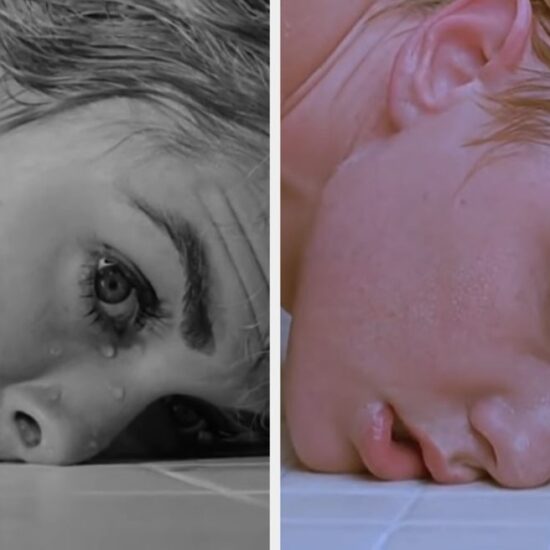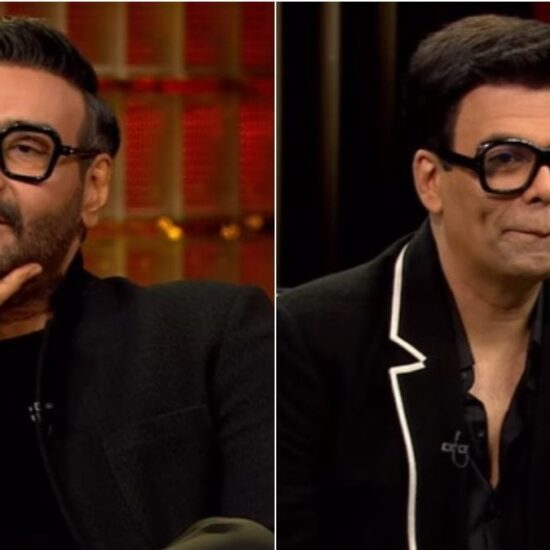
You never get scripts ahead of time and have to memorise your lines as soon as you enter the voiceover booth.
Voice actors are an essential part of the animation process. They breathe life into our favourite characters and make them memorable to the audience, whether that’s through a blood curdling laugh, authoritative tone or the way they deliver a trademark phrase.
Madhouse, Wit Studio, MAPPA
But have you ever wondered how a voice actor determines what a character’s voice is going to sound like? Or how they even became a voice actor in the first place?
To find out more about the industry and the life of a voice actor, BuzzFeed chatted to Austin Tindle, who has voiced hundreds of different characters in English dubbed anime.
Supplied
Some of these include your favourite characters in popular anime like Ken Kaneki (Tokyo Ghoul), Marco Bott (Attack on Titan), Karma Akabane (Assassination Classroom), Neito Monoma (My Hero Academia) and Yu Ishigami (Kaguya-sama: Love Is War). That’s just a small sample of Austin’s impressive voice acting resume though (seriously, check out his IMDB)!
1.
First off, there is no age limit to voiceover work and you can start at any time, provided that you’re passionate and are a hard worker.
Yanyong / Getty Images/iStockphoto
According to Austin, he had finished college and was in a full-time day job for eight years before he decided to make the switch to voice acting. During that time, he was active in theatre work, which led to him getting a local agent that then booked him auditions for Funimation, a company that specialises in the dubbing and distribution of anime.
2.
In fact, one of the biggest misconceptions about anime voiceover work is that the industry prefers heightened, cartoonish voices. In reality, they’re looking for grounded performances and natural voices.
Wit Studio
Of course, there are exceptions to this with anime and cartoons like Looney Tunes, for example, where they’re looking for a cartoonish style. But for the most part, the greatest tool you can have as a voice actor is your own natural speaking voice because it’s unique and the industry is always looking for something new.
3.
Everyone starts off somewhere, so if you’re new in the industry you’ll most likely be regulated to background voices, until you’re trusted to handle a lead role.
CloverWorks, Studio Deen
The first named character Austin voiced was Alzack Connell in Fairy Tail. Tyler Walker (a voice actor, ADR [automated dialogue replacement] engineer and ADR line producer) worked with Austin on this role, leading him to entrust Austin with the lead part in Is This A Zombie?.
4.
Sometimes mistakes happen in the dubbing process and they don’t get noticed until after the episode has gone to air.
A-1 Pictures
In one of Austin’s first solo sessions, he played a side character in Season 2 of Black Butler. The character has a Cockney accent and according to Austin, he did one of the vowel sounds wrong. It didn’t get noticed though and even made it to air!
5.
You don’t have to be a hardcore anime fan from day one to get voiceover work in the industry.
6.
The biggest difference between voice acting in comparison to other kinds of acting is that you get to record your lines moment by moment.
Studio Bones
The way it works is that in the voiceover booth there will be screens set up — one will have the animation and the other will have a Word document or Excel spreadsheet with dialogue. You’ll then watch the scene and go cue to cue, attempting to match your speech with the character’s mouth movements.
With dubbing anime, you’ll most likely be working with a mostly finished product, which can help stir up emotions in comparison to other kinds of acting. Austin said, “When you’re in a film or on stage, you don’t have that swelling orchestral music that’s in these anime scenes, which voice actors can then use to stir up emotions. It allows you to be in the moment. I see what the Japanese actors already did, what the context of the scene is, what the music is telling me and it allows me to react naturally with my dialogue.”
7.
Plus, you don’t have actors to play off in the moment, meaning that it’s just you, in the booth, and the director trying to nail the scene.
Jacqueline Garonski / Getty Images/iStockphoto
It’s why directors are so important in voiceover work. They’re responsible for navigating the voice actor and ensuring that the ebb and flow of dramatic scenes work because they’re the ones putting all the pieces together.
8.
Each animation studio has their own process for how they do English dubbing, but a lot of it is trying to match the “flaps” of a character’s mouth movements.
@austintindle / Via instagram.com
According to Austin, Funimation likes to work cue to cue, meaning that a voice actor will watch the scene in Japanese first. The Japanese track will then be removed and the voice actor will have to try and match the character’s mouth movements.
Comparatively, other studios do what Austin calls “the J method”, where they’ll press play and a voice actor will start speaking over the Japanese track. They’ll run through an entire episode and then go back and try and fix what doesn’t sound right.
9.
You never get scripts ahead of time and have to memorise your lines as soon as you enter the voiceover booth.
Studio Pierrot
Austin said, “When I say memorise lines, I mean right there in the moment. I have 30 seconds — sometimes it’ll be a big monologue and you’ll be going back and forth between the screens. You try to get an idea of what the line is so you can say it while monitoring the flaps. Generally, you get 30 seconds per cue and they want to get through, if they can, 30-35 cues in an hour. It’s a very technical and laborious process because not all cues are equal and some will have to be redone. It’s a skill that you develop on the job.”
10.
While it may sound easy, you have to be really specific with your rhythm of speech, especially when you have to incorporate other sounds into your cues, like breathing, laughing and gasping, to bring the animation to life.
Lerche
Each cue in anime voiceover work will start with what some people call the standard 102, which is an exhale, then an inhale sound. While these are described basically in the script, for example, “open mouth, speechless”, voice actors can change it up depending on the mood of the scene. One example Austin gave is if a character is quietly indignant about something — that would be more of an outward breath, followed by a quicker inhale.
11.
However, you have to be careful not to be repetitive with these additional sounds for multiple characters. Voice actors have to have a wide variety available in their tool kit and build upon them constantly.
J.C. Staff
Austin said, “Nowadays, I like to try and make a sound that sounds as far off from the basic structure as possible. I like to see what other things I can do, especially with blood-curdling screams or laughs. I have this kind of crazy villainous laugh and anytime I have a character like that, I keep trying to add something different to it so it doesn’t sound exactly like Accelerator [from the A Certain Scientific anime series] or whoever.”
12.
Each voice actor will have a different preparation method to get themselves into character — and their methods can change over time.
Wit Studio
When Austin was younger, he would try and get into what he calls the “mode”. He would do a bunch of vocal exercises and if the scene was particularly demanding, say a torturous scene, he would try and tap into those emotions beforehand. Nowadays he doesn’t find that helpful and instead focuses on staying present, sensitive and aware of both the scene and the character, as well as having his voice prepared and loose.
13.
Being overly emotional in a voiceover booth, for example crying during an intense scene, can actually do more harm than good.
Kyoto Animation
Austin said, “When you’re in the booth, the scene can go anywhere. You could need to be a sobbing mess one second and the next, it’s supposed to be the next day and your character is cheery again. So, I’ve noticed that actually crying in the booth can be detrimental. It doesn’t sound better and if you get too stuffy-nosed for the next scene, it can screw everything up.”
14.
The voices of characters in English anime dubs are inspired by the Japanese track, but is ultimately decided upon through a conversation with the voice actor and the director.
A-1 Pictures
Usually, the voice actor and director will first listen to the Japanese track because they want to honour that first and foremost. Then, it’s a matter of figuring out what the English version of that is. The voice actor might suggest something and the director will tweak it until they land on a voice that both parties are happy with. According to Austin, this exact process is what happened when he was cast as Yu Ishigami for the English dub of Kaguya-sama: Love Is War.
In other instances, a voice actor will be cast in a role because of their natural speaking voice and will therefore use it to determine the character’s sound. They will then use tone and vocal placement, which are informed by the intentions of the character, to inform the consistent sound of a character.
15.
There is no typical work day for an anime voice actor, but their schedule is usually determined by seasons of the show they’re working on. If they’re attached to one, it could be 12 episodes over three months, with an episode released weekly.
TNK
Keep in mind that voice actors are usually involved in multiple projects — and with anime production increasing rapidly due to worldwide interest, that means hours spent in voiceover booths recording lines.
16.
You need to treat your voice like an instrument — which involves taking care of it.
17.
And if you don’t, the constant strain on your vocal chords, on top of a busy schedule, can result in permanent damage.
J.C. Staff
Austin recalled a moment when he was voicing Accelerator in Season 3 of A Certain Scientific Railgun, which — after an intense day of voiceover work — resulted in his voice breaking. “There was this one scene that just broke me and you can even hear my voice breaking in the scene, but we just had to get it that day. I’m pretty sure there are certain sounds I can’t make after doing that.”
Contracting the Omicron variant of COVID-19 affected Austin’s vocal range too, even though his symptoms weren’t severe. He said, “Ever since then, there are certain violent screams in my range that are getting cut off.”
18.
In some instances, you’ll have to voice scenes that aren’t fully animated or are in complete silence.
Cavan Images / Getty Images/Cavan Images RF
According to Austin, it’s a little bit trickier to do this, but you develop experience while on the job.
19.
Voice acting generally doesn’t pay very much, which is why side hustles are a voice actor’s best friend.
20.
The most rewarding thing about being a voice actor is seeing fans appreciate your work.
Pierrot
Austin said, “Acting has always been very important to me, so it’s a joy to get to participate and it’s a joy to know that people appreciate it. You get to talk to fans and hear that these things resonate with them.”
21.
And lastly, there is no difference in skill between an actor and a voice actor.













